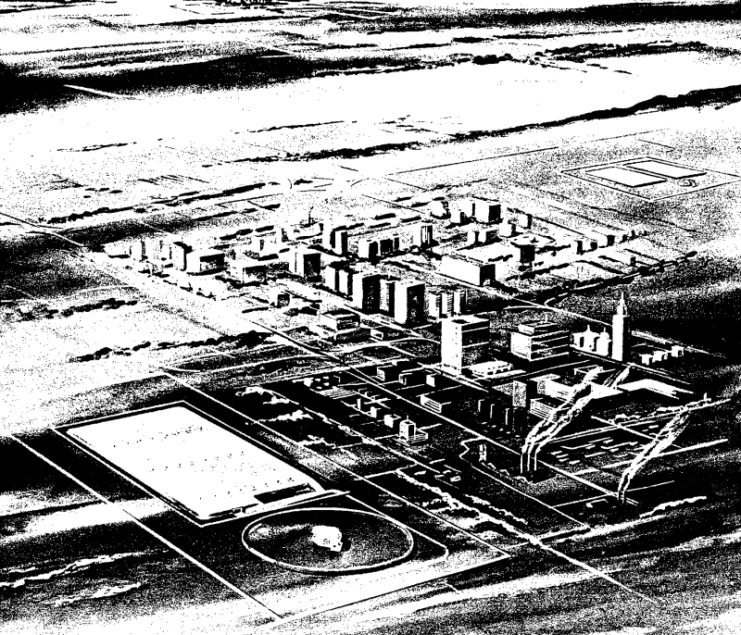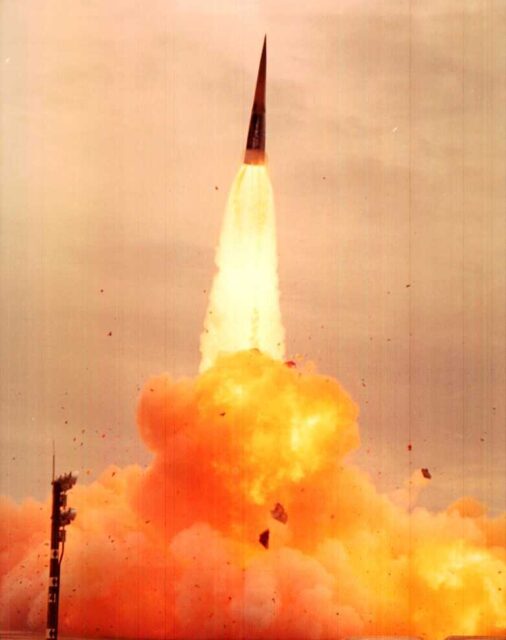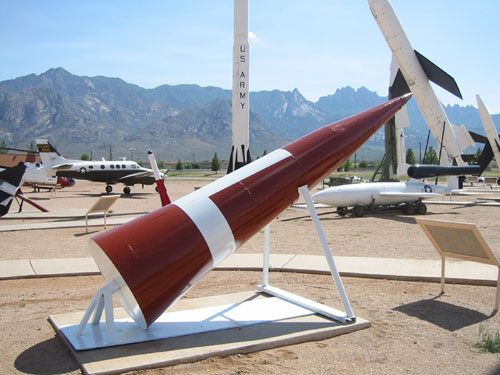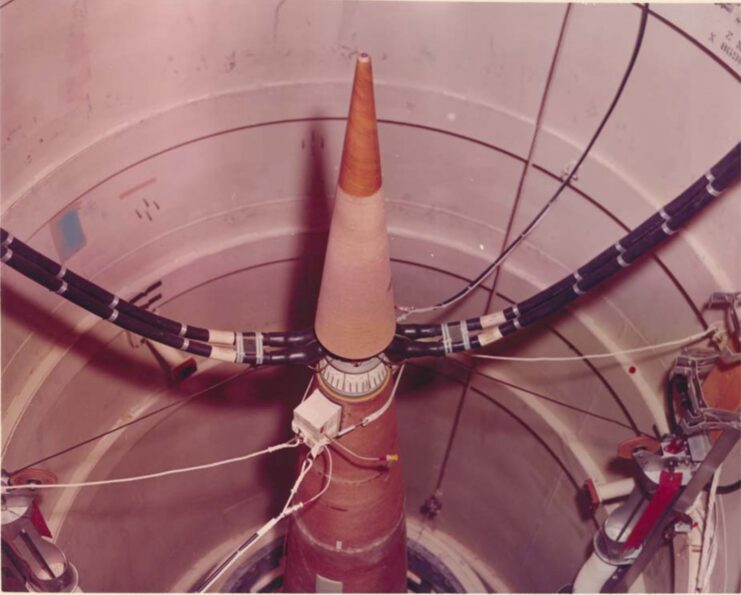After a phase of great expectation and thorough planning, the US military started working on the development of an anti-ballistic missile (ABM) intended to intercept Soviet re-entry vehicles (RVs). Dubbed the “Sprint” missile, it was deployed by the US Army between 1975 and 1976, demonstrating an impressive capability to achieve extreme speeds almost immediately.
However, despite its early accomplishments, the ABM system was only used for a short period of time, as shifting policies eventually resulted in its cancellation.
Last-ditch defensive strategy

Since the 1940s, the U.S. military has been focused on creating weapons designed to intercept theater ballistic missiles (TBMs). In 1955, Bell Telephone Laboratories received this assignment, and their evaluation found that it was technically possible to adapt the Nike Hercules surface-to-air missile (SAM) into an anti-ballistic missile with some modifications.
With Bell’s direction, development of the Nike Zeus got started in 1955. This effort led to advancements, including the creation of advanced radar systems capable of detecting intercontinental ballistic missiles (ICBMs) from great distances, which facilitated timely countermeasures. Additionally, the project spurred enhancements in computer technology, resulting in faster and more efficient systems.
By 1959, Nike Zeus testing was in progress, and in 1962, a specialized testing facility was set up on Kwajalein Island. These trials showcased the weapon’s capacity to intercept projectiles and effectively target low-flying satellites, confirming its effectiveness and operational capabilities.
Issues with the Nike Zeus

During the development of the Nike Zeus, it became clear that the ABM had numerous weaknesses that made it vulnerable to defeat.
Because it relied on 1950s-era mechanical radar, the system’s ability to track multiple targets was limited. A report from the time indicated that four warheads could achieve a 90 percent chance of destroying a Nike Zeus base. Initially, this didn’t seem like a significant concern, but as ICBMs became cheaper to manufacture, the likelihood of the Soviet Union deploying them against the United States increased.
Over time, additional challenges emerged. Following nuclear testing in space in 1958, it was discovered that radiation from warhead detonations could cover large areas, disrupting radar signals above an altitude of 60 km. If the Soviets triggered an explosion above a Nike Zeus site, it could limit detection until it was too late to launch a counterattack.
The Nike-X replaced the Nike Zeus

Following then-Secretary of Defense Neil H. McElroy’s directive, the Advanced Research Projects Agency (ARPA) undertook an investigation into pertinent issues. Their findings indicated that both high-altitude nuclear explosions and radar decoys lost effectiveness in the lower atmosphere due to thickening. To tackle this issue, the recommendation was to wait until the warhead descended below 60 km, allowing radar detection to resume.
However, a new challenge arose. The warheads, moving at Mach 24 speeds, required the deployment of equally high-speed missiles to intercept them before reaching their targets.
Consequentially, Secretary of Defense Robert McNamara, who succeeded McElroy, suggested to President John F. Kennedy that funds designated for the Nike Zeus project be reallocated toward advancing the ARPA’s system. His argument persuaded JFK, leading to the establishment of Nike-X.
Introducing the Sprint missile

The Sprint missile took center stage in the Nike-X program. Armed with a W66 thermonuclear warhead, its mission was to intercept re-entry vehicles (RVs) at a distance of 60 km.
Measuring 27 feet in length and weighing 7,500 pounds, the Sprint relied on a precise launch sequence. Initially housed in a silo, the missile was launched when its cover was blown off by an explosive-driven piston. Once airborne, it would adjust its trajectory toward the target, guided by ground-based radio command guidance. This tracked incoming RVs via phased array radar and led the missile to its destination, where it annihilated its target through neutron flux.
The Sprint’s performance was nothing short of remarkable. Engineered to accelerate at a staggering 100 g and reach Mach 10 in a mere five seconds, it operated at low altitudes where its skin temperature soared to 6,200 degrees Fahrenheit. To counter this, an ablative shield was employed, creating a distinct white glow around the missile as it traversed the sky.
Navigating through such extreme conditions necessitated powerful radio signals capable of penetrating the plasma enveloping the missile, ensuring precise guidance toward its intended target.
HIBEX missile

The High Boost Experiment (HIBEX) missile is considered a kind of predecessor to the Sprint missile, as well as its competitor. It was another high-acceleration missile designed in the early 1960s, and it actually provided a technological transfer to the Sprint development program.
Unlike the Sprint missile, the HIBEX had a high initial acceleration rate of nearly 400 g. Its role was to intercept RVs at an even lower altitude – as low as 20,000 feet. Unlike the Sprint, it featured a star-grain “composite modified double-base propellant” that was created by combining zirconium staples with aluminium, double-base smokeless powder and ammonium perchlorate.
Sprint II missile and the end of the Nike-X program

Over time, the Nike-X evolved into the Safeguard Program, prompting the Los Alamos National Laboratory to explore alternative warheads for a fresh design. Subsequently, efforts were directed toward enhancing the Sprint II missile.
By 1971, the Sprint II became an integral part of the Safeguard Program, serving as a protective measure for Minuteman missile fields. Its interceptor boasted a slightly reduced launch dispersion, compared to its predecessor, which enhanced hardness and minimized miss distance for improved accuracy.
Despite ongoing optimization efforts by Los Alamos to refine the design, the operational lifespan of both missiles was relatively brief.
Want War History Online‘s content sent directly to your inbox? Sign up for our newsletter here!
During the 1970s, shifts in the ABM policies of both the US and the Soviet Union raised doubts about the effectiveness of the Safeguard Program. It was deemed unnecessary and expensive, leading to its cancellation. The official discontinuation date is unclear, but reports persisted until 1977.
